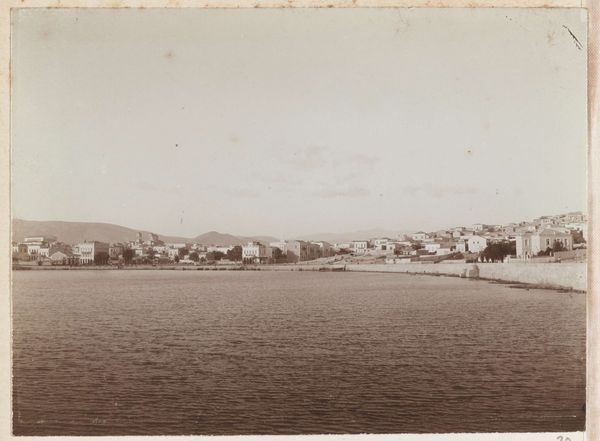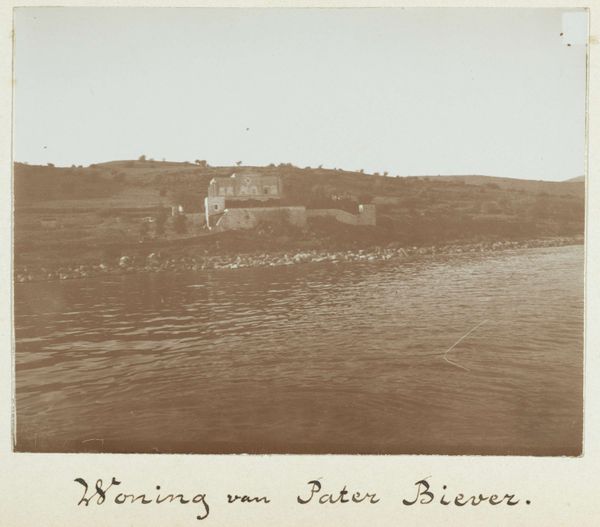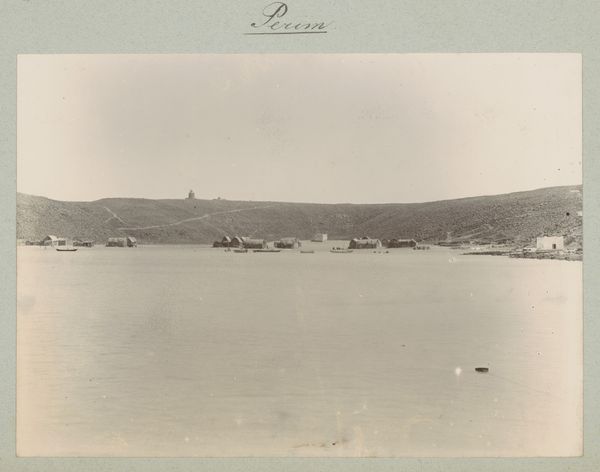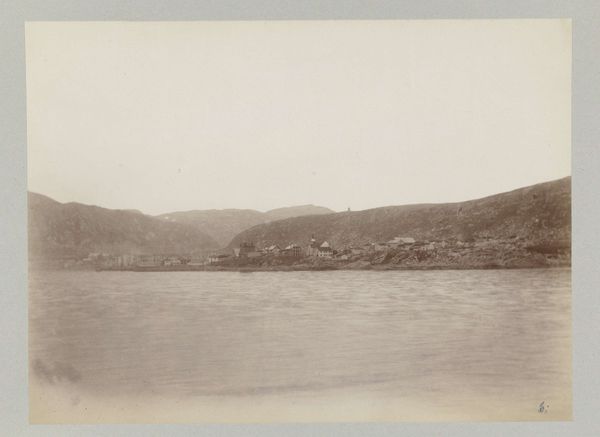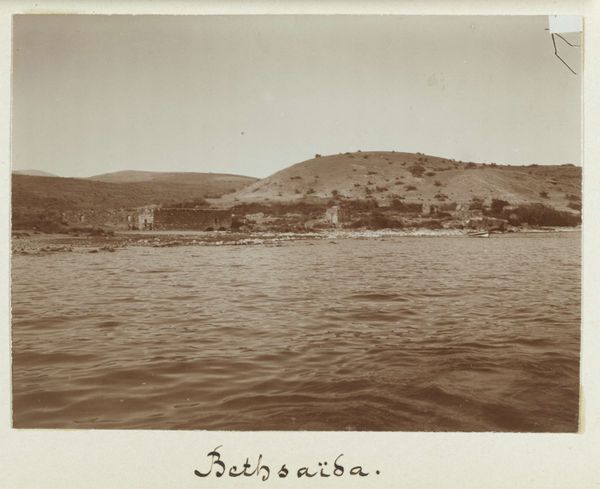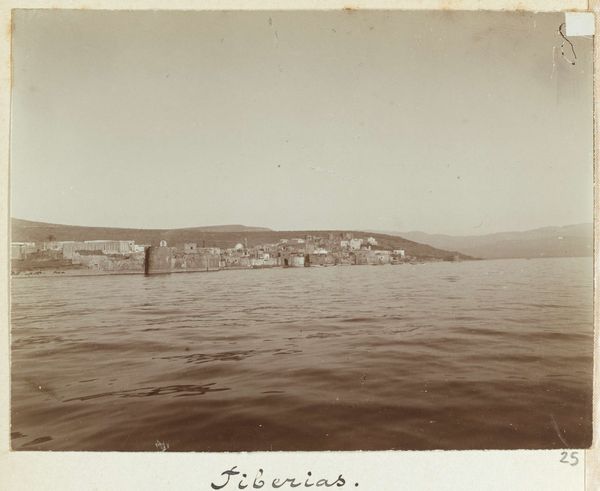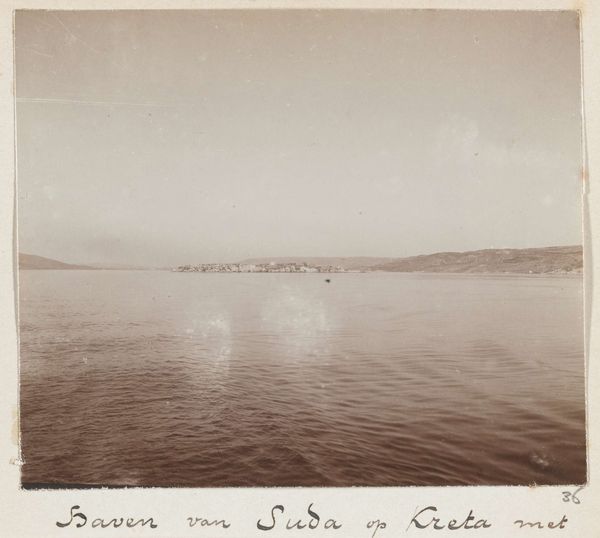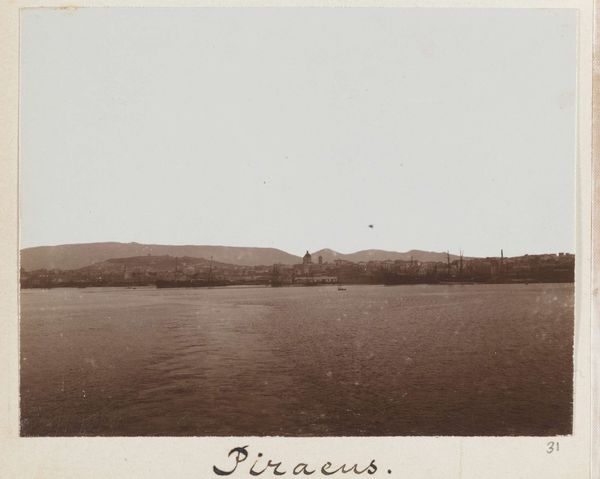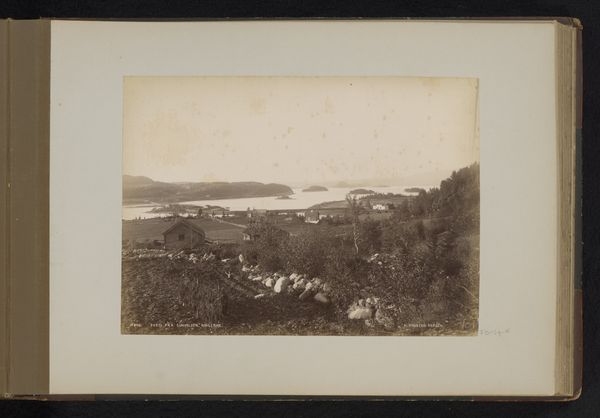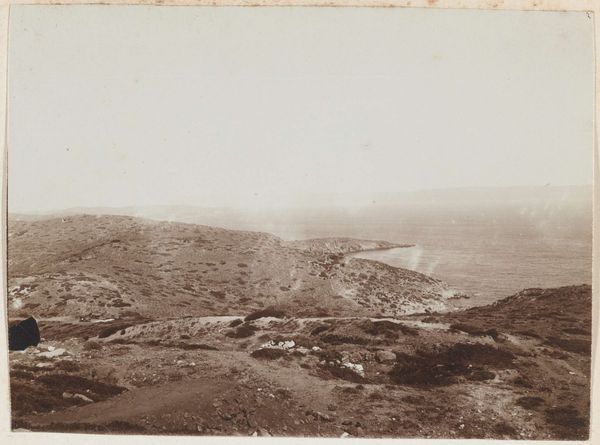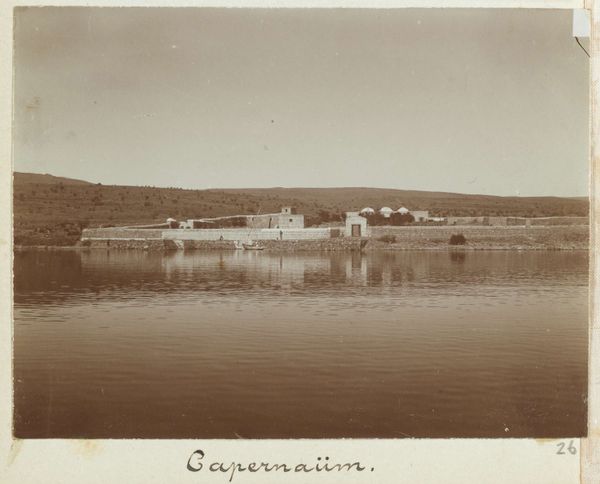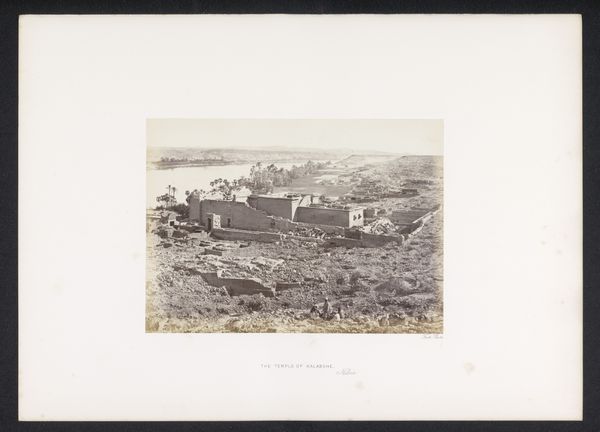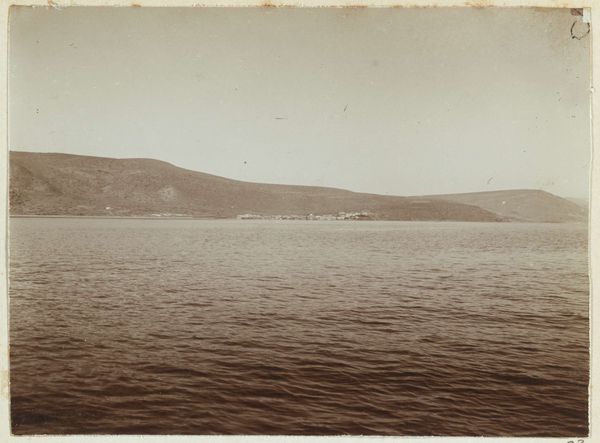
photography, albumen-print
#
landscape
#
photography
#
orientalism
#
albumen-print
Dimensions: height 90 mm, width 109 mm
Copyright: Rijks Museum: Open Domain
Curator: Here we have "Eiland voor Souda (nu Chania) op Kreta," or "Island for Souda (now Chania) in Crete," an albumen print made around 1898, likely as part of a larger travel album. Editor: There’s a stark stillness to this scene, almost melancholic. The monochrome palette amplifies the weight of the stone island, while the flat water seems to isolate it completely. Curator: Note the clever structuring; the photographer, Johannes Lodewijk Heldring, used the water’s surface and the subtle wave patterns to lead our eyes directly to the island’s fortifications. It is meticulously composed. Editor: Heldring captured this island fortress at a specific moment when empires and cultural identities clashed on that very ground. This type of landscape conveys not just geographic beauty but also stories of conflict and resilience through visual symbols. Crete has been a cultural melting pot, a strategic possession fought over through ages. Curator: Yes, and within the Orientalist lens of the time, the photograph becomes a documentation –almost an inventory– of conquered territories. The meticulous detailing, like the visible stonework, suggests a desire for factual representation, yet it romanticizes the landscape, stripping away the contemporary sociopolitical contexts. Editor: The very structure speaks of defiance against those imposing powers. Fortresses symbolize the need for protection. But they equally function as symbols of power, assertion, and perhaps resistance of the population. Curator: Consider the limited tonal range and the relative softness. The muted colors help convey the textural qualities and material presence, it forces us to consider not just the scene, but the physicality of the island, too. Editor: Looking closely, I'm intrigued by what we *don't* see. Where are the people? The ships? It invites a quiet, perhaps unsettling, contemplation on what was, and perhaps, what’s now lost or transformed over the passage of time. Curator: Ultimately, what strikes me about Heldring's work is his masterful manipulation of photographic space. By manipulating light, form and depth, the picture goes beyond mere topographic document to something more. Editor: A hauntingly beautiful snapshot that reveals history through layers of symbol. The fortress lives and tells its story of struggles.
Comments
No comments
Be the first to comment and join the conversation on the ultimate creative platform.
